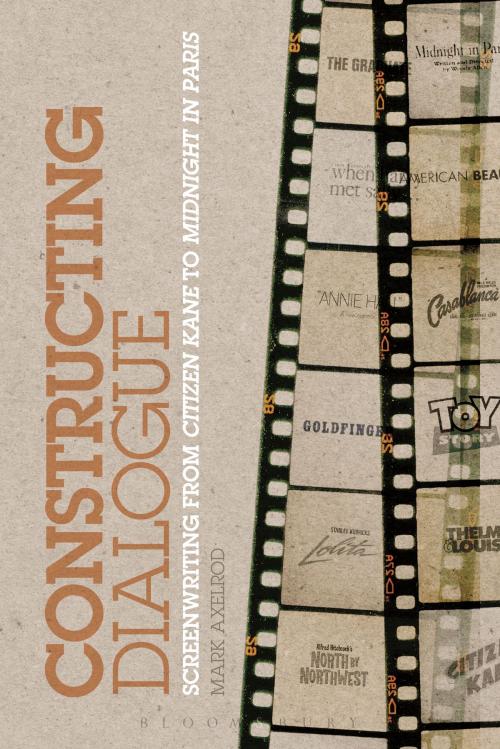Constructing Dialogue
Screenwriting from Citizen Kane to Midnight in Paris
Nonfiction, Entertainment, Film, Screenwriting, Performing Arts| Author: | Mark Axelrod | ISBN: | 9781441121912 |
| Publisher: | Bloomsbury Publishing | Publication: | November 7, 2013 |
| Imprint: | Bloomsbury Academic | Language: | English |
| Author: | Mark Axelrod |
| ISBN: | 9781441121912 |
| Publisher: | Bloomsbury Publishing |
| Publication: | November 7, 2013 |
| Imprint: | Bloomsbury Academic |
| Language: | English |
Unlike most screenwriting guides that generally analyze several aspects of screenwriting, Constructing Dialogue is devoted to a more analytical treatment of certain individual scenes and how those scenes were constructed to be the most highly dramatic vis á vis their dialogue. In the art of screenwriting, one cannot separate how the scene is constructed from how the dialogue is written. They are completely interwoven.
Each chapter deals with how a particular screenwriter approached dialogue relative to that particular scene's construction. From Citizen Kane to The Fisher King the storylines have changed, but the techniques used to construct scene and dialogue have fundamentally remained the same. The author maintains that there are four optimum requirements that each scene needs in order to be successful: maintaining scenic integrity; advancing the storyline, developing character, and eliciting conflict and engaging emotionally. Comparing the original script and viewing the final movie, the student is able to see what exactly was being accomplished to make both the scene and the dialogue work effectively.
Unlike most screenwriting guides that generally analyze several aspects of screenwriting, Constructing Dialogue is devoted to a more analytical treatment of certain individual scenes and how those scenes were constructed to be the most highly dramatic vis á vis their dialogue. In the art of screenwriting, one cannot separate how the scene is constructed from how the dialogue is written. They are completely interwoven.
Each chapter deals with how a particular screenwriter approached dialogue relative to that particular scene's construction. From Citizen Kane to The Fisher King the storylines have changed, but the techniques used to construct scene and dialogue have fundamentally remained the same. The author maintains that there are four optimum requirements that each scene needs in order to be successful: maintaining scenic integrity; advancing the storyline, developing character, and eliciting conflict and engaging emotionally. Comparing the original script and viewing the final movie, the student is able to see what exactly was being accomplished to make both the scene and the dialogue work effectively.















